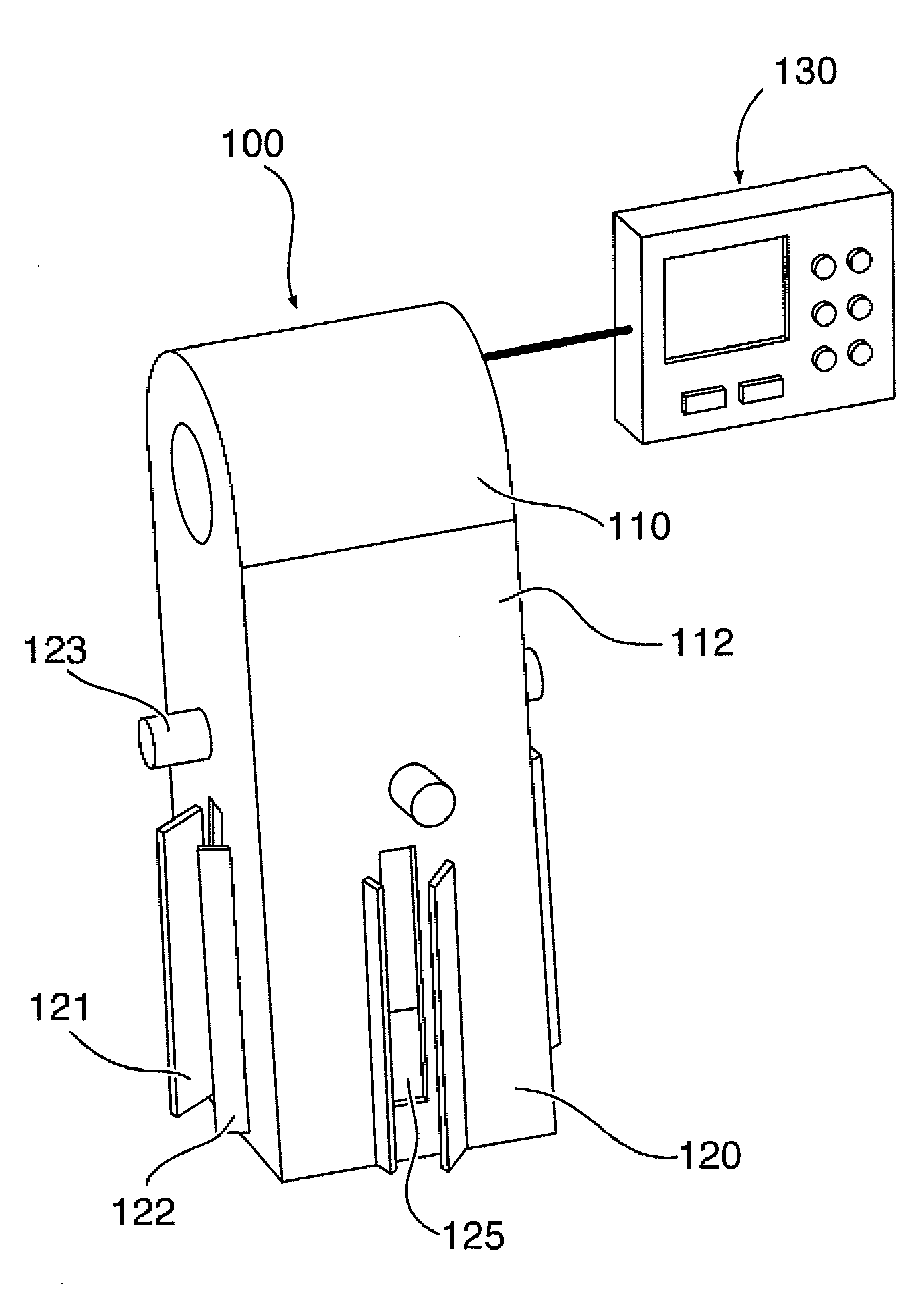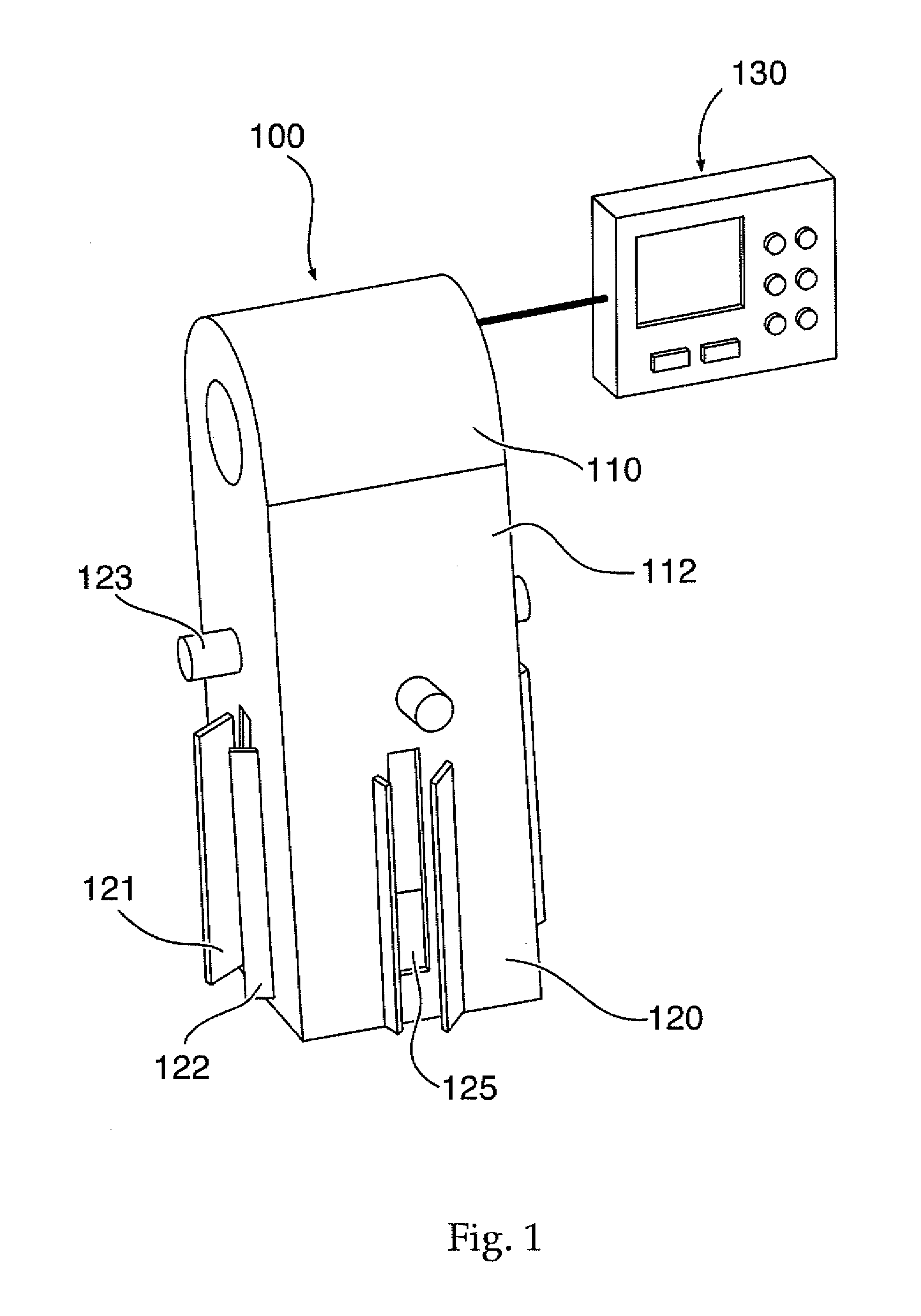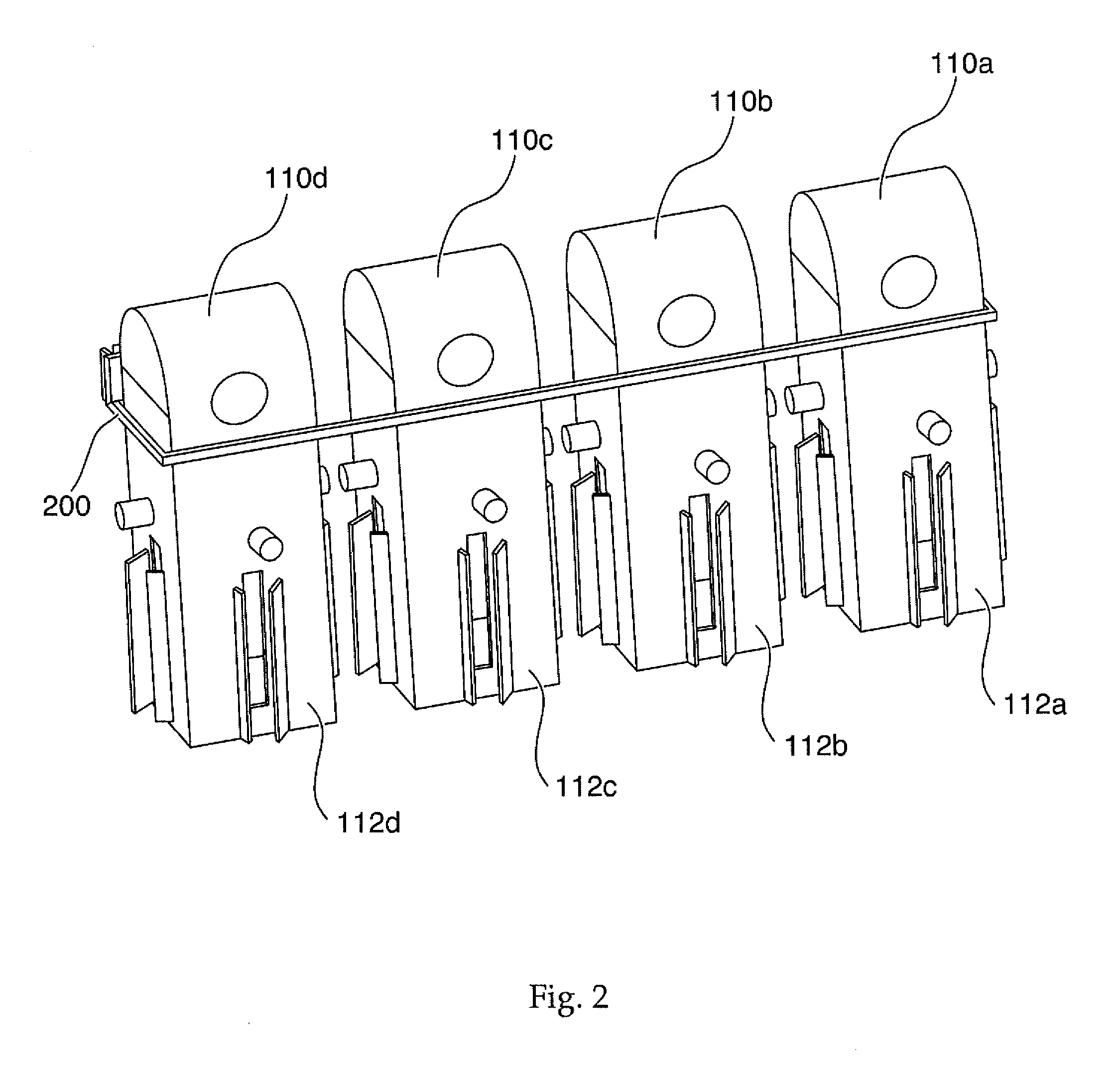Device and method for screening a plant population for wind damage resistance traits
a plant population and plant technology, applied in the direction of positive displacement liquid engines, piston pumps, instruments, etc., can solve the problems of sudden breakage of the stalks at the nodes of corn plants, plant injuries or perishance, etc., and achieve the effect of quick and efficient application
- Summary
- Abstract
- Description
- Claims
- Application Information
AI Technical Summary
Benefits of technology
Problems solved by technology
Method used
Image
Examples
Embodiment Construction
[0036] The present inventions now will be described more fully hereinafter with reference to the accompanying drawings, in which some, but not all embodiments of the invention are shown. Indeed, these inventions may be embodied in many different forms and should not be construed as limited to the embodiments set forth herein; rather, these embodiments are provided so that this disclosure will satisfy applicable legal requirements. Like numbers refer to like elements throughout.
[0037] While the embodiments of the present invention are described below in the context of an agricultural environment for growing maize plants in rows defining row axes, it should be understood that the embodiments of the present invention may also be used to apply wind forces to other types of plants, which may be cultivated in a variety of configurations and environments. For example, in some embodiments, the device of the present invention may be used to apply wind forces and evaluate wind resistance in ...
PUM
 Login to View More
Login to View More Abstract
Description
Claims
Application Information
 Login to View More
Login to View More - R&D
- Intellectual Property
- Life Sciences
- Materials
- Tech Scout
- Unparalleled Data Quality
- Higher Quality Content
- 60% Fewer Hallucinations
Browse by: Latest US Patents, China's latest patents, Technical Efficacy Thesaurus, Application Domain, Technology Topic, Popular Technical Reports.
© 2025 PatSnap. All rights reserved.Legal|Privacy policy|Modern Slavery Act Transparency Statement|Sitemap|About US| Contact US: help@patsnap.com



